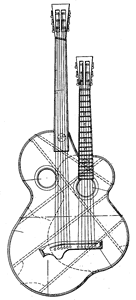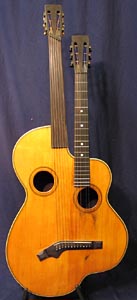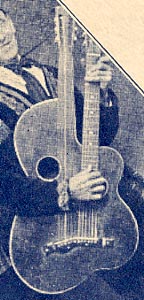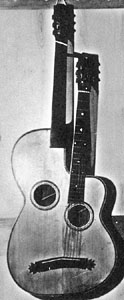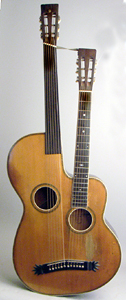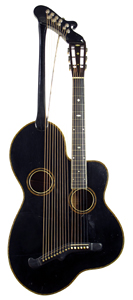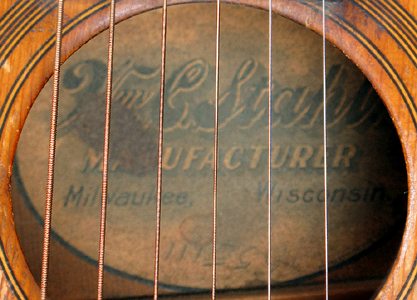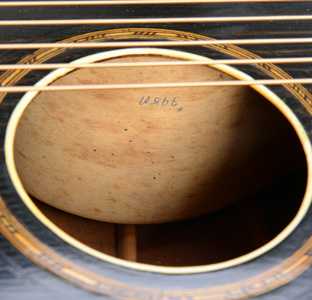|
Larson Brothers Maurer and Stahl 1912 Patent Harp Guitars by Gregg Miner Updated October 2025 This page includes all the specimens and images I have found of the distinctive "Picasso" harp guitars. It is now clear that there were two distinct body shapes and two different brands (Maurer and Stahl). Type 1 is similar to the patent drawing (with the necks parallel or diverged) and is seen in double-neck versions and hollow bass neck versions within the two brands. Type 2 is similar, but does away with the larger bass body protrusion. Some have the Maurer label (or are "attributed to" them) and at two have a Stahl label or stamp. Curiously, extremely few of these actually have the internal "parlor guitar" inside! I know - why build such a thing without the patent inner body?! My recent (2025) conclusion is that the internal body specimens were made specifically for William Stahl, and the non-internal body instruments were labeled "Maurer." In other words, the Larsons made both Type 1 & 2 shapes for themselves under their Maurer brand, but were prevented from including the internal body by an agreement or contract with Stahl who wanted an exclusive. I realized this while writing my article Walter A. Boehm, the Gibson Harp Guitar and Their Influence on America's BMG Community.
|

